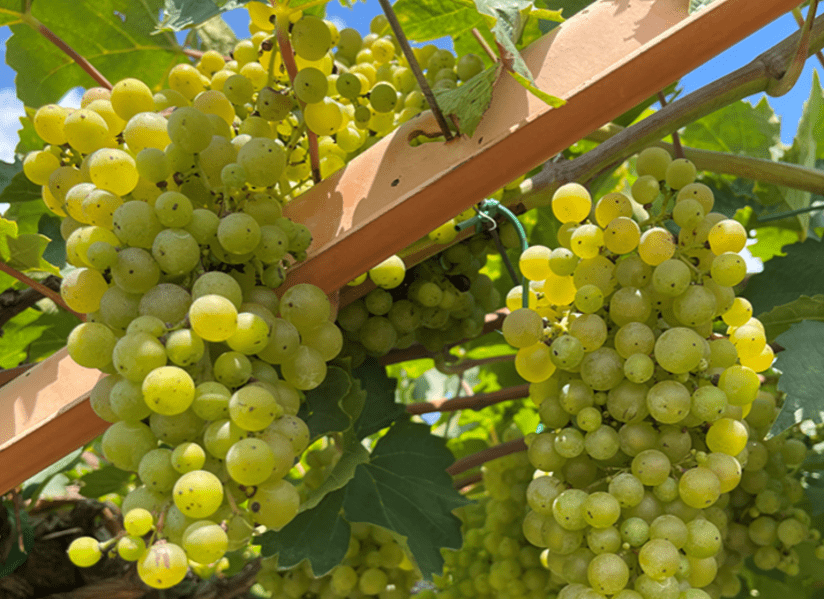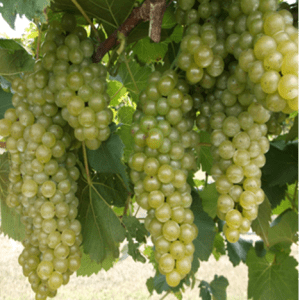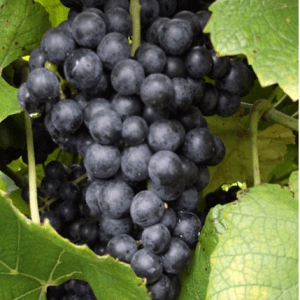Crop Production

The production of grape species in the southeastern United States is currently severely limited by Pierce’s Disease (PD)—caused by the widespread xylem-limited bacterium Xylella fastidiosa. As a result, many muscadine cultivars–and some American or French-American hybrid bunch grape cultivars with resistance to PD–can be successfully cultivated in Alabama.
Recent trials in the state have assessed the productivity and fruit quality of 10 hybrid bunch grape cultivars, but rootstock cultivar evaluation in Alabama’s environment has not been studied before. The interest in grape production in Alabama is currently growing, and the need to generate knowledge on the effects of selected rootstocks on the overall viticultural performance has become essential. Thus, an experimental vineyard was established in spring of 2014 that consisted of ‘Chardonel’ and ‘Norton’ hybrid bunch grape cultivars that were grafted on selected rootstocks or grown on their own roots. The list of tested rootstocks include 1103 Paulsen (1103P), Kober (5BB), and Teleki (5C). Data was collected to compare vine phenological development, vegetative growth, cropping potential, and fruit quality traits.
- Figure 1. ‘Chardonel’ bunch grapes grown at the Chilton Research and Extension Center in Clanton.
- Figure 2. ‘Norton’ bunch grapes grown at the Chilton Research and Extension Center in Clanton.
Results
Research results indicate that ‘Chardonel’ grafted on ‘1103P’ produced significantly higher yield compared to own-rooted ‘Chardonel’ vines during the 2019 and 2021 seasons (table 1). Total yield per vine was 76 percent higher for ‘1103P’ grafted vines in 2019 and 62 percent higher in 2020 for grafted ‘Chardonel’ vines. Total yield per plant was doubled for vines grafted on ‘1103P’ in 2021. The average yield increase for ‘1103P’ grafted vines was 81 percent for the 2019-2021 period.
Table 1: '1103P' Effect on 'Chardonel' Grape Total Yield
| Rootstock | 2019 | 2020 | 2021 |
|---|---|---|---|
| 1103P | 7.9 | 9.4 | 8.8 |
| Own Rooted | 4.5 | 5.8 | 4.4 |
‘1103P’ grape rootstock also significantly increased ‘Chardonel’ number of clusters per vine in the 2020 and 2021 seasons and the mean cluster weight of ‘Chardonel’ grape in 2019 (table 2). ‘1103P’ grafted vines also had slightly higher sugar content during 2019 and 2020 seasons.
Table 2: Roostock Effect on 'Chardonel' Number of Clusters/Vine, Mean Cluster Weight, Berry Weight, and SSC
| Rootstock | 2019 (number of clusters/vine) | 2020 (number of clusters/vine) | 2021 (number of clusters/vine) | 2019 (Mean cluster wt, g) | 2020 (Mean cluster wt, g) | 2021 (Mean cluster wt,g) | 2019 (SSC) | 2020 (SSC) |
|---|---|---|---|---|---|---|---|---|
| 1103P | 38.3 | 62.9a | 45.2a | 215.8a | 184.8 | 222.5 | 21.0 | 19.9 |
| Own Rooted | 27.5 | 43.2b | 27.1b | 160.5b | 173.6 | 186.7 | 20.3 | 18.6 |
According to the researcher’s current report, ‘1103P’ grafted vines can considerably increase ‘Chardonel’ total yield and can improve fruit quality in Alabama growing conditions. However, to ascertain the long-term effect of rootstocks on vineyard longevity, productivity, and fruit quality, further evaluations are warranted in the expanding viticultural region of Alabama.



